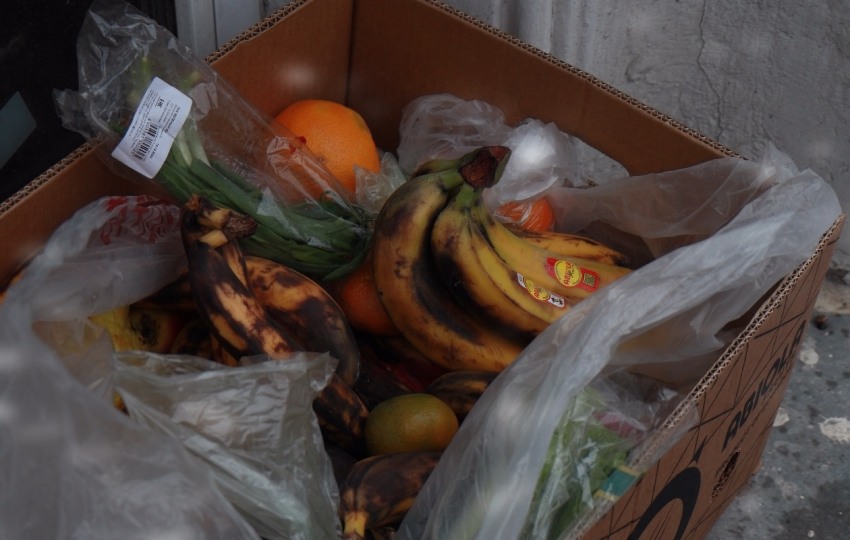A circular economy is a sustainable economic model based on the principle of ‘waste not, want not.’ It aims at promoting resource productivity, reducing waste, and decreasing the environmental impacts of production and consumption processes by maintaining the value of products, materials, and resources in the economy for as long as possible. The agri-food sector, one of the largest and most critical components of the global economy, is well-positioned to benefit from the application of circular economy principles.
Benefits of the Circular Economy in the Agri-Food Sector

- Waste Reduction and Resource Efficiency: The circular economy encourages waste reduction, allowing agri-food companies to optimize their use of resources. For example, using food byproducts, like peels and stalks, can reduce organic waste while creating new value-added products.
- Economic Opportunities and Job Creation: Embracing circularity can lead to economic opportunities. New business models, such as selling services instead of products, upcycling, and recycling, can generate additional revenue streams. Furthermore, these new business avenues can foster job creation in related industries such as recycling, composting, and waste management.
- Environmental Benefits: Reducing resource usage and waste generation leads to fewer greenhouse gas emissions, contributing to global efforts against climate change. Furthermore, by maintaining the integrity of natural ecosystems, the circular economy can help enhance biodiversity.
- Resilience and Food Security: A circular agri-food system can enhance resilience against shocks such as climate change and global health crises by improving local food production and reducing dependency on external resources.
Further Reading: What is it and How to Make an Eco Friendly Business?
Key Factors Impacting the Circular Economy in the Agri-Food Sector
- Technological Advancements: The adoption of new technologies like artificial intelligence, the Internet of Things (IoT), and advanced recycling methods can facilitate efficient resource use and minimize waste.
- Policy and Regulation: Governments play a crucial role in promoting the circular economy by providing incentives, setting regulatory standards, and creating a supportive business environment.
- Consumer Awareness and Behavior: The transition to a circular economy in the agri-food sector also relies on consumers’ willingness to adapt their buying habits and consume more sustainably.
Balancing Tradeoffs

Despite the many advantages of the circular economy in the agri-food sector, there are tradeoffs and challenges to be aware of. For instance, while technology can boost efficiency, its adoption may initially require significant investment and lead to job displacement. Moreover, transitioning to a circular model may disrupt established supply chains and necessitate business model transformations. Companies must balance these challenges against the potential long-term benefits, considering factors such as risk, cost, scalability, and public acceptance.
Circular Economy Manager: The Sustainability Champion Navigating Waste-Free Business Horizons

A Circular Economy Manager is a professional who oversees the transition from a linear to a circular economy within an organization. They are responsible for developing and implementing strategies that promote the efficient use of resources and minimize waste in line with the principles of a circular economy. The EU project CEM for SMEs seeks to establish this job role in Europe further, define its responsibilities, and improve the quality of job opportunities within this emerging field.
The responsibilities of the circular economy manager
- Strategy Development and Implementation: They create strategies to transition from a traditional, linear model (where resources are used once and discarded) to a circular model (where resources are reused, recycled, or upcycled).
- Waste Management: They focus on waste reduction strategies, such as reducing, reusing, and recycling materials within the organization. This can involve everything from managing recycling programs to designing products that can be easily disassembled and reused.
- Resource Efficiency: They work on increasing resource use efficiency within the organization. This could mean optimizing manufacturing processes or implementing new technologies that reduce resource consumption.
- Collaboration and Partnership Building: They engage with different stakeholders, including suppliers, customers, local communities, and regulatory bodies, to build partnerships and facilitate cooperation around circular economy initiatives.
- Policy Compliance: They ensure the organization complies with relevant environmental regulations and standards. They may also help shape policy discussions around the circular economy, both within the organization and on a broader scale.
- Training and Advocacy: They raise awareness and understanding of the circular economy principles among employees and other stakeholders. This often involves developing and delivering training sessions or presentations.
- Measurement and Reporting: They track and report on key performance indicators of the circular economy, such as waste levels, recycling rates, and resource use efficiency.
The CEM for SMEs project is dedicated to supporting the professional development of Circular Economy Managers and contributing to the skills development of Vocational Education and Training (VET) learners. By driving these individuals towards the circular economy, it hopes to push the momentum of this sustainable business model.
A Circular Economy Manager plays a critical role in guiding an organization towards more sustainable and efficient practices, reducing waste, and minimizing environmental impact. As this profession continues to evolve and take root in Europe, the support provided by initiatives like CEM for SMEs becomes increasingly important.
Are you interested in diving deeper into the role of a Circular Economy Manager and how the CEM for SMEs project supports this innovative profession? Visit the CEM for SMEs project website to learn more and explore how you can get involved.
Conclusion
The circular economy presents an exciting, sustainable path with a lot of benefits for the agri-food sector. Although it requires careful navigation of complex tradeoffs and challenges, it offers considerable benefits – from waste reduction and economic opportunities to environmental preservation and enhanced resilience. As we move into a future increasingly shaped by climate change, resource scarcity, and changing consumer preferences, the circular economy model becomes ever more important for agri-food. By understanding and embracing these principles, stakeholders across the sector can contribute to a sustainable and resilient future for us all.

